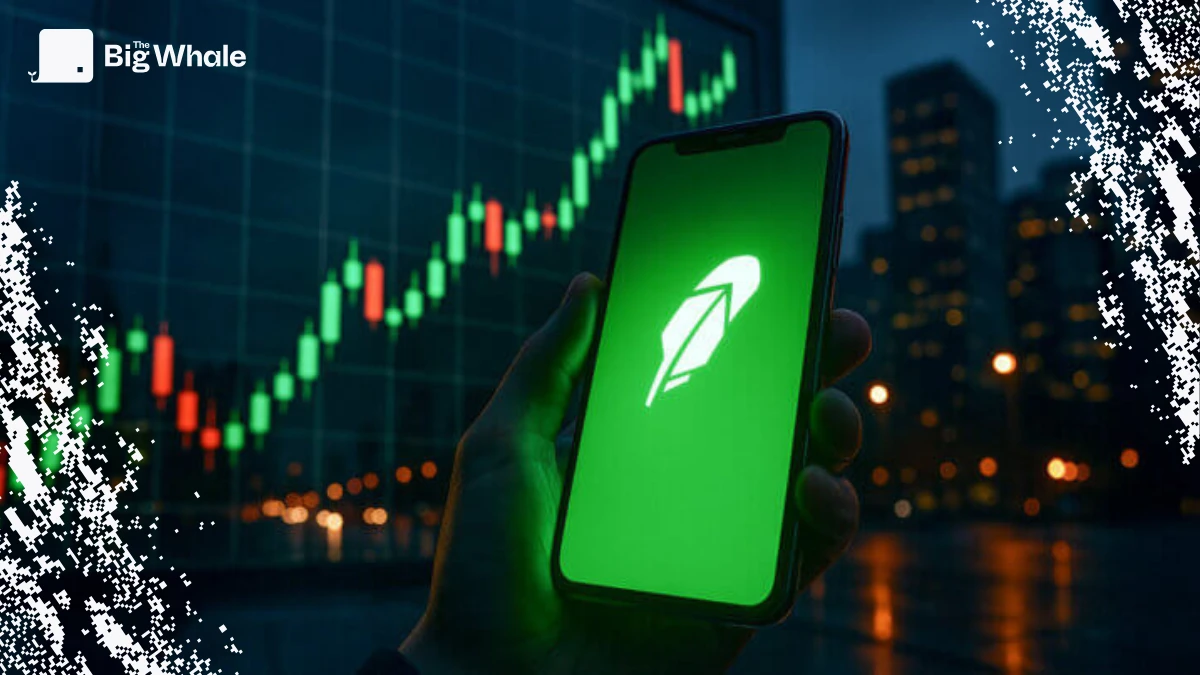For several weeks now, the traditional finance sector and the crypto sector have been converging around the same object: the tokenised share. The seemingly simple idea is winning over more and more investors and platforms. Robinhood's announcement in early July that it would offer tokenised shares to its European customers via Arbitrum's technology was a catalyst.
The idea is to make shares in listed (or even unlisted) companies accessible to a wider public via the blockchain, with the promise of 24-hour trading, stock splits, and a new form of global liquidity.
But what's behind these shares "on the blockchain"? Can you really become a shareholder in SpaceX or OpenAI via Robinhood or Backed Finance (which distributes xStocks to players such as Kraken and Bybit)? And above all, what is the legal value of these assets for investors?
Joris Delanoue, CEO of Fairmint, one of the pioneers of on-chain equity, hailed Robinhood's announcement as a historic moment, while reiterating that the securities on offer are not shares in the legal sense of the term, but economic exposures backed by intermediary structures.
"These securities still represent a derivative exposure rather than a direct holding. They are 'IOUs' on blockchain, backed by shares held in traditional custody structures," he explains.
In other words, what you buy on these platforms is not a share, but a right to a possible economic consideration linked to a share held elsewhere, often via an SPV (Special Purpose Vehicle).
This technical reality is important to understand, as it raises fundamental questions about legal certainty, applicable regulation and the rights of holders.
>> Johann Kerbrat (Robinhood): "All the services we offer today with traditional systems will switch to blockchain"
Tokenised shares lacking the functions of real shares In most cases, these tokens do not give access to voting rights, do not allow attendance at general meetings, and still do not guarantee automatic access to dividends.
First and foremost, they are a synthetic financial instrument, structured like a derivative product.
The interest for the end investor is above all flexibility: they can buy a fraction of an Amazon share for €10, trade at any time, and sometimes access securities that are not available on conventional stock exchanges. In some cases, they can put up these DeFi protocols as collateral to borrow other assets, as is the case with the shares tokenised by xStocks on Solana.
The other attraction of this new asset class lies in the wider access to unlisted securities hitherto reserved for a restricted circle of professional investors.
Joris Delanoue points out, "Robinhood has just democratised access to private equity for individual investors. It's not just a product innovation, it's a shift in who has the right to participate in the ownership economy."
Until now, only funds, family offices or accredited investors could invest in private companies such as OpenAI or SpaceX. By tokenising these shares, Robinhood is opening a breach in a system historically reserved for the wealthiest.
It should be noted that OpenAI's teams, reacting to Robinhood's announcement, warned investors on social networks: "We have not established a partnership with Robinhood, we have not been involved in this initiative and we do not approve of it. Any transfer of OpenAI shares requires our permission - we have not approved any transfers. Please be vigilant."
"That's how blurred the line is," blows a European regulator, consulted by The Big Whale.
According to our information, the OpenAI shares offered to the public ($1 million in total) may have been acquired by Robinhood CEO Vlad Tenev himself, as part of a private fundraising. Robinhood also said that these shares were housed in an SPV and that it was this vehicle that was tokenised.
But this model, while marking a step forward in terms of inclusivity, remains fragile from a regulatory perspective.
>> Tokenisation is taking the equity market by storm
Regulations unevenly applied by players In Europe, tokenised shares do not fall under the MiCA regulation, which applies to crypto-assets, but rather under the MiFID II regime, which governs financial instruments. This means that any player offering exposure to financial instruments must be licensed as an investment services provider (ISP) or work with an authorised partner.
"Most of these platforms present these assets as fractional shares , but in reality they are derivatives. They are derivative financial instruments that replicate the performance of an underlying asset - in this case, a share," says a source close to a European regulator.
"This is not a new product, but it falls fully within the scope of the European MiFID directive. This means that you need an appropriate licence to offer it, with all the obligations that this implies in terms of investor profile assessment, transparency, and compliance," continues this expert.
Some platforms such as Kraken or Bitpanda do have this licence and go through an authorised entity (in Austria for Bitpanda, for example). But in the case of Robinhood, this is not at all clear. A priori, Robinhood itself does not hold a MiFID licence in Europe.
They did buy Bitstamp, which does hold one, but the two entities remain separate for the time being, and the tokenised product offering is offered from the Robinhood application, not from a regulated entity.
"This poses a major legal problem. Theoretically, without a MiFID licence, Robinhood does not have the right to offer such products in the European Union", argues another regulator on condition of anonymity.
In the United States, the SEC already considers these tokens to be financial securities, which explains why Robinhood's products are initially reserved for the European market. The legal complexity is compounded by the fact that the SPVs used to issue these exposures do not always guarantee total transparency on collateral or governance structure.
Faced with these limitations, another approach is beginning to emerge: that of "native on-chain" equity.
Will corporate cap tables soon be natively tokenised? Instead of tokenising existing shares via wrappers or derivatives, some start-ups like Fairmint are proposing to build the company's capital structure directly on the blockchain.
"Rather than tokenising an existing structure, we have rebuilt the infrastructure of private equity as smart contracts. Cap tables live on-chain, ownership is programmable, transferable, and composable with DeFi," explains Joris Delanoue.
More than $1 billion of corporate capital is already circulating via this infrastructure, according to his estimates.
The difference is major: in a native model, there is no longer any need for an SPV, no need for a derivative, or for a traditional custody intermediary. The share is a blockchain asset from day one.
It can be transferred, split up, and integrated into decentralised financial uses without losing its legal nature. And when the company wants to open up its capital, it doesn't need to "tokenise" (it's already on-chain).
"Companies that start up with a programmable cap table won't need to tokenise later. They will already be ready to access global investors," sums up Joris Delanoue.
So two paths are taking shape. On the one hand, platforms like Robinhood are tokenising existing shares to widen access. On the other, protocols like Fairmint build companies whose capital is natively programmable.
These two approaches converge towards the same goal: to reinvent the way financial securities are issued, held and traded. The difference is that the former remains constrained by traditional structures, whereas the latter seeks to replace them.
Beyond the technical aspects, it is indeed a redefinition of the share market that is at stake.
The gradual decoupling between the historic stock exchanges (Nasdaq, NYSE) and the new market infrastructures based on blockchain could, in time, shift the markets' centre of gravity. "What struck me was that the signal sent by Robinhood goes far beyond their own product. It marks the shift towards a programmable equity economy," concludes Joris Delanoue.
The question now is whether regulators, companies and investors are ready for this new era.




